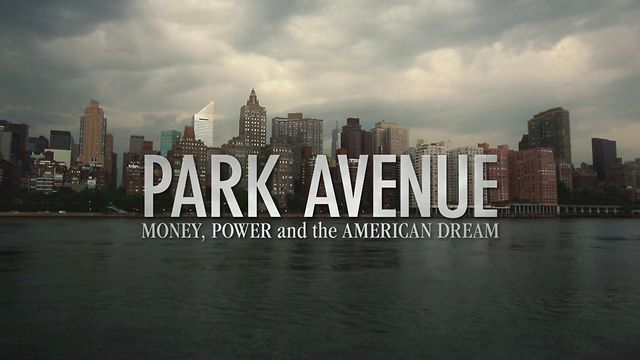Blog
A Mighty Pen
Make. Believe.
Subscribe to The ARCANITE: a newsletter
for writers, filmmakers, and creatives.
Subscribe to The ARCANITE: A newsletter for writers, filmmakers, and creatives.

By Shawn Spitler
•
21 Apr, 2020
For my thesis film at NYU, Bull Thistle, I wanted to be ambitious. My love for aviation led me to draft a script where an imaginary airplane haunts the main protagonist of the film. In the original script, Dawn, an angsty teenager, yearns for freedom from her over-worked life on the farm. This was to be a subplot motivated through the imagery on screen and never explicitly stated in the film. I already know what you're thinking, but film school is where we're meant to make mistakes and learn the hard way. The practical footage we shot for this subplot is some of my favorite footage. This also made it a painful reality for me when I had to chop it out of my final project. The reason for cutting it is twofold. Firstly, it doesn't cut together very well, as you can see above. This type of scene required more shots that I simply didn't have. I'd storyboarded this scene until I was certain it would work, and it still fell short. Looking at the footage now, after all these years, it's clear to me how I'd approach the shot list but even then I'm sure I'd fail to gather everything I'd need (because you never have enough footage). The second reason, the reason I'm writing this article, has to do with symbolism and how I've learned not to do it. More importantly, this is somewhat a diary entry I'm airing publicly, because I'm exploring how I'd tackle this again if I had the chance. My failure became apparent during my NYU thesis review. For the uninitiated, this is where your thesis film is screened by select faculty members and they determine if you've learned enough to be worthy of receiving the coveted Master's Degree. Going into my review I felt uneasy with the product I'd made (for good reason). Some of my previous work had received high praise around the school, and it felt like folks expected a lot from me. I wasn't handing them a product I felt good about. And the feedback was more hurtful than I anticipated. One of the faculty members stated, "I'm worried. I don't think you have the footage you need to make this into a coherent story." Ouch. My biggest problem? I believe it was the dream sequence whereby the protagonist is chased down by an airplane. When I'd written it, it made complete sense. Dawn is haunted by her passion to escape her current life. This desire is manifested through her visions of an airplane that haunts nearly every scene: in the background, on the fringes or through audio cues. And how, exactly, did I tie this symbolic figure to Dawn's desires for freedom? In the opening scene she's sitting with an aviation book in her lap. What a terrible idea. What was I thinking? Past-Shawn is very dumb. Future-Shawn is a little less dumb, so let's see what he has to say about the scene where the airplane attacks. In the lead-up to this scene, Dawn discovers her dad has been cheating on her mom with her aunt. This movie is actually about Dawn struggling with this information and finding the courage to tell her dad she knows about his adulterous affair. In a subsequent scene, Dawn and her father are shoveling cow manure until her aunt arrives and daddy goes a running. As Dawn watches the aunt's mini van drive down the lane with her father inside, Dawn is chased by the airplane. This confused EVERYBODY! And it should. It makes no sense. It makes no sense because I failed to do two things: (1) tie the airplane to the symbol it represented, and (2) distinctly separate her reality from her fantasy. In one of our directing classes, my professor screened a short film made by a prior student. If memory serves me right, it was called Stick Boy , but I can't find any evidence of its existence on the internet. It was, to me, a perfect MOS film (a movie filmed without sound or dialogue). The film opens on a young boy poking a condom on the ground with a stick. He then stumbles on a young girl playing hide and go seek. He begins to poke her with the stick. She resists. He persists. She struggles. He kills her. It's very striking. The stick in Stick Boy is symbolic of, well, his penis. How do we know? Because there has been a direct correlation made between the stick and the condom from the very first shot. When Stick Boy pokes the girl, we have carried our prior knowledge of that shot into this scene. The stick has been sexualized and we understand clearly what we are seeing—a rape. At no point in Bull Thistle did I connect an airplane to anything outside of itself. The airplane was always an airplane and nothing else. I might have gotten away with this if I'd addressed issue number two and better separated Dawn's reality from fantasy. Honestly, it might have been as easy as changing the color balance so we could see something was different. We'll never know. But from a screenplay perspective, this was flawed from the get-go. When her aunt's car drives away and immediately the airplane chases her down, the absurdity alone is not enough for an audience to understand what's going on. At the end of the day, I'd failed to be an audience member of my own movie. I did not visualize my film from the only perspective that matters. I'm lucky to have had enough footage to prove the professor at my thesis review wrong; I did have enough there to tell a story sans-airplane. But it was a painful process of recutting the film a thousand different ways in an attempt to salvage this footage. In the end I had to let it go.
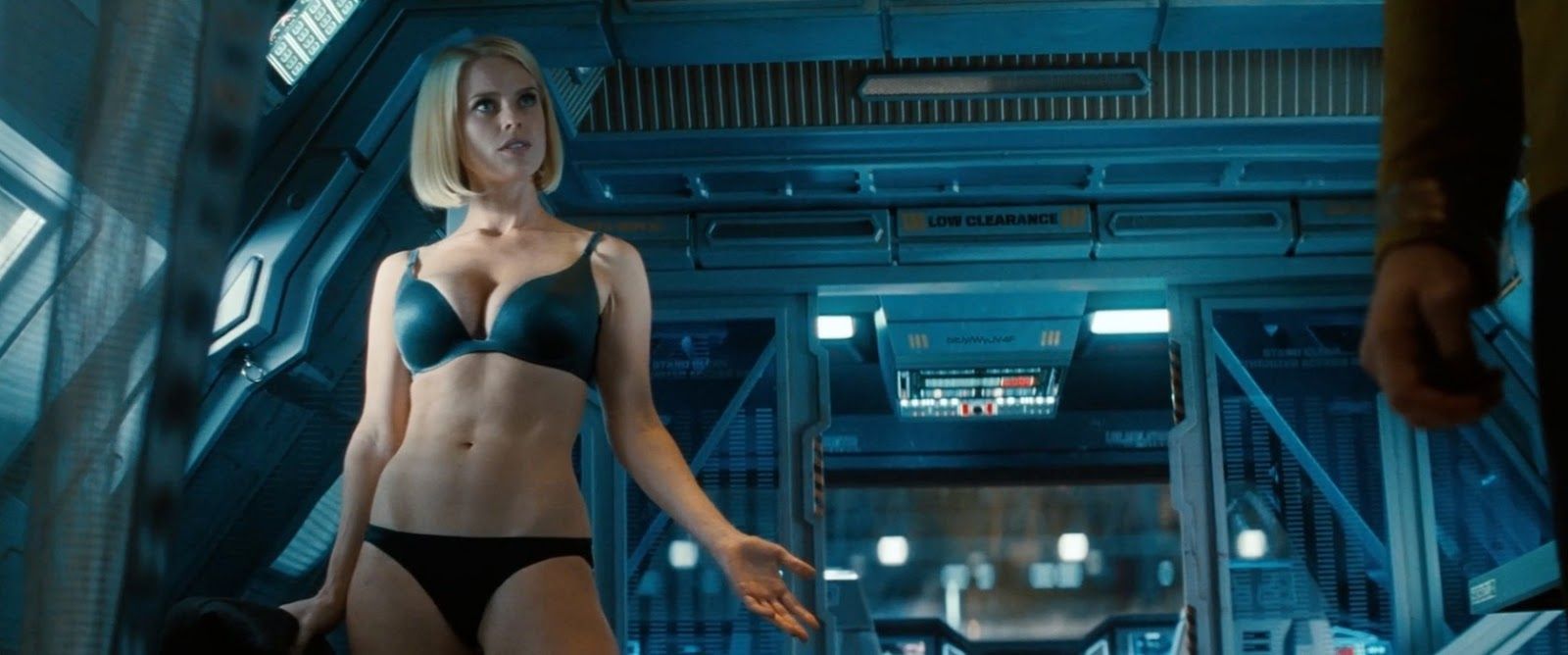
By Shawn Spitler
•
28 May, 2013
Film 3 (365)
Star Trek: Into Darkness
Carol Marcus (Alice Eve) gets gratuitously undressed for a scene in "Star Trek: Into Darkness".
Hey, you clicked on it didn't you?
The first ten seconds of "Star Trek: Into Darkness" provides the viewer with a birds-eye-view kung-fu zoom. This film gives us plenty of interstellar kung-fu zooms much in the vain of the Battlestar Gallactica series. They still feel just as cheap in a multi million dollar franchise. Director J.J. Abrams is also consistent in providing us with his now trademark lens flares [see video below for examples].
I expected nothing less than a good ol' fashioned popcorn adventure ride and that's exactly what I got. In fact I expected it to be full-on action ad nauseum. It wasn't and I'm glad. There are a few moments for the characters to develop, but not many.
If I have any beefs with this film it's that we aren't trusted as an audience. We're spoon fed every bit of information quite a few times just in case we didn't catch it the first go-round. The exposition becomes blatant at times. For example, a few members of the USS Enterprise head down to the "abandoned" Klingon planet of Kronos and are subsequently surrounded by, who else, Klingons! Several ships make their presence known by fire a few rounds from their ship to the small one containing Kirk, Spock, Uhura, and a couple of other guys whose names aren't worth knowing, they'll both be dead soon.
Uhura (Zoe Saldana), makes it very clear to us what's happening by stating, "We're outnumbered. We're outgunned. If we attack we'll all be dead." (or something like that). I laughed. But something tells me Abrams knows what this dialogue sounds like. He's more interested in the youngsters if you ask me. And let me tell you, my inner 5th grader was very pleased. If only Alice Eve had more skin time.
CollegeHumor's Favorite Funny Videos
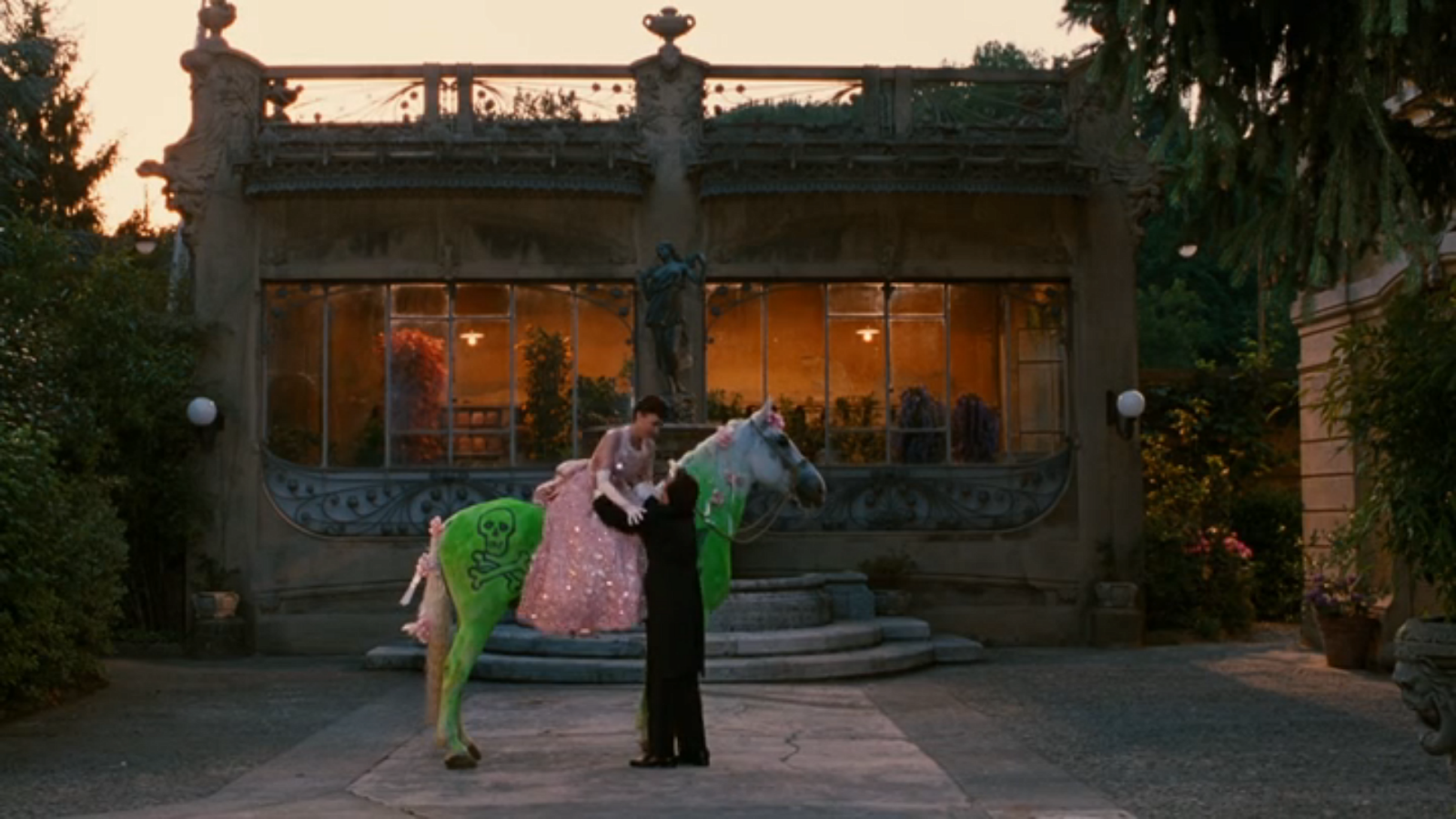
By Shawn Spitler
•
28 May, 2013
"Life is Beautiful" is one of those films I always put on the back burner with little interest in watching. I was in high school when this film was released in the US in 1999. I remember most vividly Roberto Benigni jumping over the seats at the Academy Awards as he climbed his way to the stage to accept his Oscar. Truthfully I didn't really know what the movie was about. It was in Italian and it took place during the war. Benigni road a bicycle through the streets with a goofy grin on his face. That's all I knew. Boring… Boy, what was wrong with me!? This film is extremely touching. The trailer I've embedded below is quite deceiving. I ensure you this film will make you laugh hard and gut punch you with reality a moment later. I can't really say it's like anything I've seen before (in terms of theme and approach to that theme). In all honesty I don't think I would have appreciated this film as much as I do now, but it's so good I would have laughed just as much back then. If you don't know, "Life is Beautiful" follows Guido (Benigni), an Italian Jew around and during WWII, as he pines after Dora (Nicoletta Braschi), a non-Jew, who he eventually marries and bears a son with, Joshua (Giorgio Cantarini). The film is split into two parts, the first being the time he swoons Dora away from her fiance prior to when the war begins, and the second half follows his time in a concentration camp separated from his wife but protecting his son. As I write this I now realize how intricate this film really is. But during the entire film Guido's humor is ever present. It reminded me of the late great Jacques Tati. Guido uses his humor to save his son, who should have been killed in the gas chambers but whose own stubbornness against taking a shower saved him! Benigni's character turns the camp into a "game" for his son, who believes if they score 1,000 points they can go home with a real battle tank for first prize. I don't cry during movies, but this definitely made me water up a time or two. It's well paced and I never felt burdened by the subtitles thanks to the humor, which isn't always a punch line but often very physical humor. My 11-year-old daughter and I laughed very hard together during a bit where Guido "kidnaps" Dora away from her birthday party, wrecks his car during a rain storm, turns a pillow into an umbrella, and manages to rip the back of Dora's dress off. Oh, and let's not forget the green horse. This is definitely on my top ten list of comedies. There is so much to this film that I could write and write. But that would take away the magic if you haven't seen it. I urge you to see this film now streaming on Hulu.

By Shawn Spitler
•
27 Apr, 2013
Film 1 (of 365)
To the Wonder
Screenshot from Terrence Malick's To the Wonder
Terrence Malick's To the Wonder pushes the filmmaker's visual style further to abstract than it has ever been. For those of you unfamiliar with Malick's work he continues to push story and plot to the side in favor of powerfully emotional moving imagery. However, this is also a problem. The law of diminishing returns is alive and working in To the Wonder. So much visual information is being poured over the viewer for such a long time (110 minutes) that I often found myself daydreaming.
To be fair, Malick's Tree of Life is much the same. For some reason I was touched and moved by that film so much more than I was by this one. In Tree of Life we are in a childhood memory and experiencing an almost spiritual exploration of the character. This means the cinematography was visually supporting the narrative. Granted, it was booed at Cannes. So speaking for myself Tree of Life was emotional and welcomed.
So why doesn't To the Wonder - despite tremendous similarities with Tree of Life - work as well? The visual style in this film does not support the narrative as it did in ToL.
Enough comparing and contrasting - there's no sense in it beyond what we've already explored. In all, I liked this film. It has its flaws but I can't deny its visual captivity over me. A Malick film is not meant to be watched it's meant to be experienced. It must wash over you. They are delicious and bitter and all the better for providing both.
If you're in need of a story, this isn't for you. But who needs story when you have Malick?

By Shawn Spitler
•
25 Apr, 2013
A screenshot of Olga Kurylenko fromTerrence Malick's To the Wonder.
I have long desired to watch one movie a day for a year and then write about it online (arguably I should be doing this anyway).
First of all I'm doing it for primarily selfish reasons. I want to start expanding the library of cinema in my head and make myself a better storyteller.
There are several movie "lists" out there that I can choose from: Roger Ebert's Great Movies and the Criterion Collection to name a couple. I could simply pick a list and start viewing from the first to the last.
That sounds like a logistical nightmare.
Instead I'll sample what I can of those lists from what I have - namely Hulu and Netflix.
This is all well and good, but I want your input! What should I start with? It's my goal to have a weekly list released on Sunday to give you an idea of what I'll be watching for the next week. I'll spice it up each week with films ranging from comedy, drama, documentary, musicals, old school black & white, new school action, etc., etc.
Tomorrow I'll finish Terrence Malick's To the Wonder. A movie I started but couldn't finish thanks to Amazon's issues with their own On Demand service. That's another story.
Ironically enough I won't be starting tonight and won't be watching anything on Thursdays for at least a couple of weeks.
I can't promise every day will equal a single film, but I can aspire to watching 365 films within 365 days. That means I might be doubling up on a few of those days - but hey, I won't be complaining.
Warmest,
~Shawn

By Shawn Spitler
•
03 Jun, 2011
No, I'm not an oceanographer, a scientist, or an inventor. I like the water well enough, and I’m certainly not afraid of it. Boats are intriguing, the open ocean is spellbinding in all its forms, and snorkeling is okay. Nothing about the salty wet equivalent of space draws me in quite the way it did for Cousteau. On the other hand, I have my own world of fascinating mysteries I can’t wait to explore. This is the world of cinema. Herein is where our stories overlap. Truthfully, I could have used any person whose name is synonymous with their work: Walter Murch, Amelia Earhart, Ansel Adams, to name a few. Cousteau was on my mind because I began to wonder if learning more about his subjects somehow made them less desirable. Before I begin delving too far into this original question, let me lay the groundwork. First of all, I know many people who watch movies simply for the surface of pleasurable eye candy, and certainly many films go no further than this superficial layer. For me, however, the cinema is what the ocean must have been like for Cousteau. Instead of the seven seas, I have genres and subgenres. Instead of sharks and octopi, I have Gregory Peck and Audrey Hepburn. Charlie Chaplain and Sidney Lumet are my fellow biologists. I don't look at these elements as alien from one another, nor do I imagine they are unreachable or unrealistic to understand. Cousteau's oceans, with all their hidden secrets, were invitations to delve deeper, and go farther. The movies, their actors and directors, and all the science behind the illusion, are my invitation to stand on the shoulders of giants, and push the artistry forward.

By Shawn Spitler
•
22 Dec, 2010
Every artist struggles within himself to find his voice. Be they a writer, a painter, or a filmmaker; their voices lie deep within them -- a fossil hidden within rock. And as the archeologist must break away earth to find the beauty within, so must the artist. This is never easy, always painstaking, and many times never accomplished with success. The problem is different for each artist. We are all unique, and must determine by ourselves the best approach for success over our internal conflict. The problems are many: do I obey the rules or break them? which one's do I break? should I imitate those who inspire me? do I have an original bone in my body? is this worth doing? Is it worth doing? That's the stumbling block for most artists who seem to have forgotten why they loved their art to begin with. Perhaps, after trying to make ends meat with their talents, they became burnt out, ashamed of how they commercialized their skills. Or perhaps some lost their passion after a random set of external circumstances. The truth is, if you don't find your purpose in something, your voice will never be heard, because there's nothing worth listening to. I struggled with all of the above questions at some point. I was a draftsman, dabbled in painting, looked for an occupation in graphic design, and eventually realized I wanted to be a filmmaker. This epiphany occurred to me at the same time I realized why I needed to be a filmmaker. Not everyone gets to have that, and I won't be sharing mine with you here. I mentioned it only to say that having a purpose is only part of the solution.
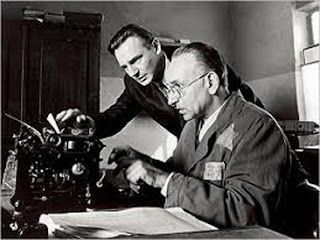
By Shawn Spitler
•
12 Dec, 2010
The creation of Schindler's List started with Poldek Pfefferberg , a holocaust survivor who persistently pushed for Oskar Schindler's story to be told on film. His efforts began very shortly after the war, but the fruits of his constancy did not take shape until 1980, when the Austrian novelist Thomas Keneally agreed to write the book Schindler's Ark . After it was published in 1982, Pfefferberg began pushing the idea of a film once again, but this time to Steven Spielberg . It would take 11 years before Spielberg felt capable of tackling the subject matter, but the result of Pfefferberg's tenacity paid off. The scope of Schindler's List is so vast that a book could be written about it in the name of critical analytics. This is not only a great film, but an important one. Every decision made during its inception has culminated into a brilliant masterpiece, and it is not insignificant that Spielberg won his first Oscar for this film. Several decisions were made by the director that would not only go against the typical way in which he made a film, but agains the Hollywood norm as well. This is difficult to accomplish, even for a man of Spielberg's clout. Many were worried upon hearing of Spielberg's decision to make a Holocaust film, in that he would create a glossy Hollywood movie and undermine the events. However, this did not end up being the case. Shooting in black and white, using hand held, and the absence of the crane and Steadicam were all choices that culminated into something almost anti-Hollywood. Spielberg himself did not think the film would do well.
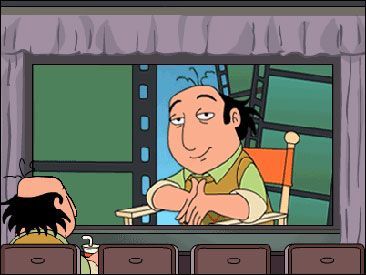
By Shawn Spitler
•
09 Dec, 2010
It has become increasingly popular, in our modern society, to view the role of the critic with more aggression than was previous. This comes mainly from the divergence of the critic from his audience. Our society today places emphasis on the individual, who need only surround him or herself with those of likeminded interests and opinions. Outside opinions are not welcome to the individual, who holds his or her beliefs to be the highest and most supreme authority. Often enough the individual believes they are the beacon of truth, transmitting a message of absolutes, which they apparently received from within their closed off adolescent experience. The narcissistic hold on the public has been ever tightening with the onset of social networking sites and other web based social media, placing the individual in a position of influential power over others, without any proper understanding of that influence or power, and without the slightest credentials for what they are pushing. This issue could invariably circumscribe several topics, but we will contain it within the field of the critic as it pertains to us and our site. Herein, a film reviewer without proper credentials is not a critic, and provides not the slightest ounce of value to the motion picture medium.

08 Dec, 2010
The unique approach of analysis in the films I will be discussing has prompted me to write this article. Firstly, I want you to be aware of what not to expect. This is not a site where you will find simple movie reviews or ratings. It is for critically analyzing motion pictures as a work of art; understanding their individual purpose and place in our culture. However, let me not be so pompous as to exclude the occasional rant or rave. With that being said, let me establish the way in which each film will be analyzed. We must all agree, up front, that motion pictures are art. Granted, there is some really bad art out there, but it is art nonetheless. In order to analyze movies as art we must understand what a critic is, and what his relationship is to art. The first critic of worthy note is often cited as Plato . From there we can examine Aristotle and the many theorists and critics that have come after them. No, I won't be citing each of these men during my critiques. I will, however, be adding, as time goes by, an exploration of a new philosopher/critic/theorist through the coming months into an archive. This archive will allow you to link from the critiques to a specific theory I may be talking about with regards to a film for easier understanding. There will also be links on the sidebar of this page that can provide quick answers to other, possibly confusing, topics of interest. But that will come when the time for it is needed.

By Shawn Spitler
•
07 Dec, 2010
p.p1 {margin: 0.0px 0.0px 0.0px 0.0px; font: 12.0px Helvetica}
p.p2 {margin: 0.0px 0.0px 0.0px 0.0px; font: 12.0px Helvetica; min-height: 14.0px}
Cinema. It is the emotional expression of an artist through the medium of light and sound, created with an army and imagination. I am enamored with cinema, as I'm sure you must be, or you wouldn't be reading this. This article will not immerse you in philosophical banter -- that is for another blog. Instead, this article is going to outline what you can expect from this site and future posts.
Firstly, the articles you will find here are a creative exercise for myself. My intentions are to write critical analysis of motion pictures, be they old or new. If, however, my tastes change in some form or fashion, I will not hold back my desires to write of such things. On the other hand, I have started another blog for writings which stray too far from the intended nature of this page.
I do encourage critical analysis of my writings from others, such as yourself. If my structure does not flow or my ideas are disjointed, please, by all means, let me know. As I stated before, this is a creative exercise intended to further my writing abilities. I can only get better through your engaged responses.
To make this site the best that it can be I encourage you to participate and interact. Do you have a film you would like for me comment on? Curious about something you saw in a movie and want some help deciphering the mystery? By all means let me know. Consider this a place we can interact and stimulate intelligent conversation.
This should be fun.



